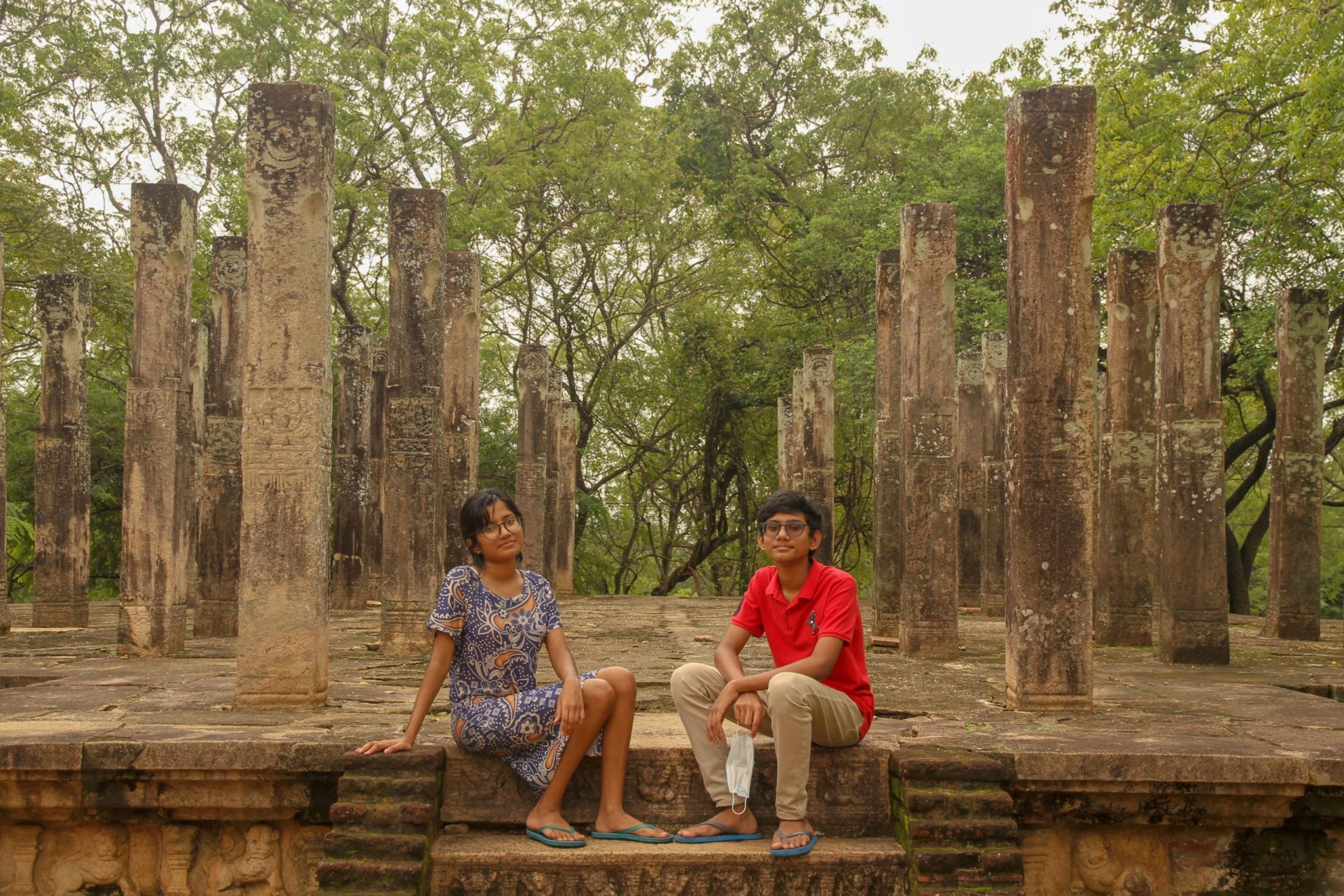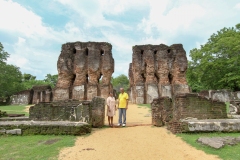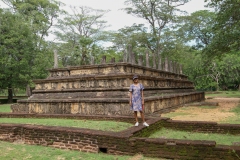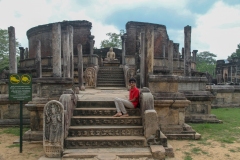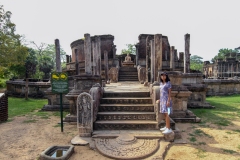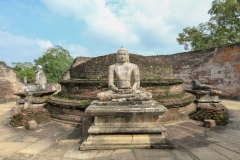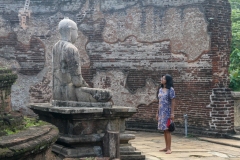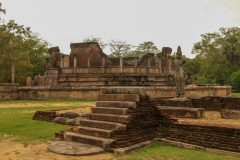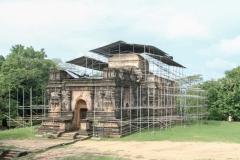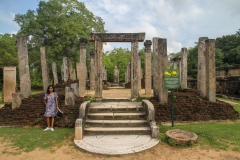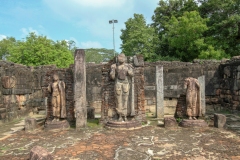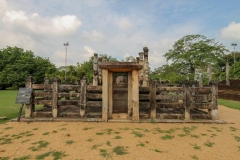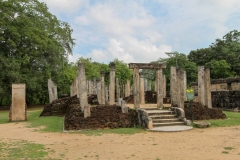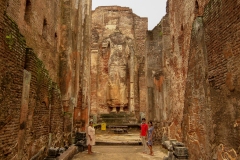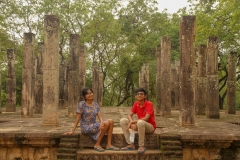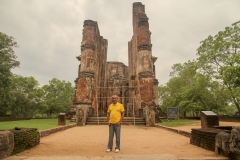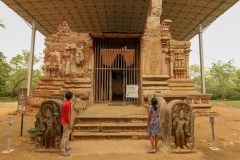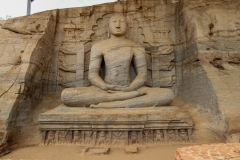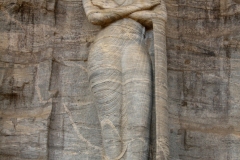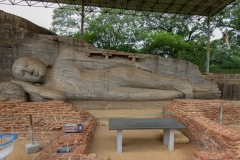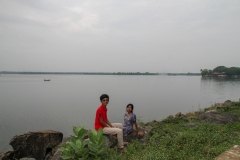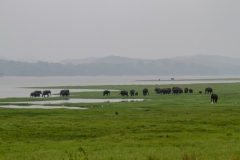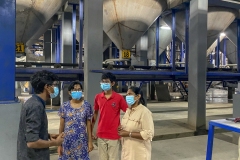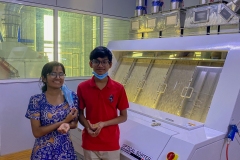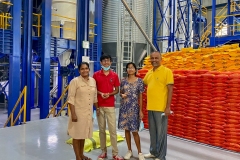Around 8 AM me and my family went to have our delightful breakfast in Aliya Resort, which started off with fresh passion fruit juice. https://vouchers.themeresorts.com Then we left the Aliya Resort & Spa and headed to Polonnaruwa which took around an hour to reach. The places we visited and their information is given below, please free to read about them. When we were at the Manik vihara, a police officer was kind enough to explain its legends to us. After visiting all these places we visited the Araliya Rice Producers, Polonnaruwa factory which was not only very educational but also interesting for my children and wife. Then we had lunch with a Dudley Sirisena, owner of the Araliya Rice & few of friends. https://araliyarice.com As we have visited all the placed spots and my son had tuition classes he had to attend, we decided to come back to the Resort. We were once again provided with an amazing dinner, my children especially enjoyed their bolognese spaghetti. The following day, 23rd of Nov 2020, we planned on returning to Colombo. We explored the Aliya Resort & Spa, and the staff explained to us about the various Ayurveda methods they perform, etc. After our enjoyable walk, we stayed at the hotel to relax.
The Plonnaruwa
To the east of the Cultural Triangle, following the Anuradhapura era is the second ancient capital of Sri Lanka, Polonnaruwa. The Plonnaruwa legacy may have lasted for only two centuries however judging by the colossal monuments and monasteries it left behind it is clear that it was dynasty that cannot be easily forgotten. The archaeology remains at Polonnaruwa are exhibited at the Museum of the Central Cultural Fund and its visitor centre.
It was King Vijayabahu I who defeated the Chola invaders and regained its land after 52 years. Since then Vijayabahu devoted his long reign to the restoration of the country. However Polonnaruwa is largely King Parakramabahu’s city. He built walls that would surround the city and further strengthened the fortifications of its inner city. The great Parakramabahu tank was built after he linked up and expanded three former tanks of Polonnaruwa.
Polonnaruwa is an unprecedented place due to its spectacular works of architecture that belong to both Buddhist and Hindu cultures. Stupendous image shrines like Lankathilaka, the Tivanka Image house, Gal Viharaya, Vatadageya and the Seven story edifice known as the Sathmahalprasada, just to name a few from the long list of invaluable sites that can be visited.
Royal Palace of King Parakramabahu
Believed to have been a very large building, five stories high, the Royal Palace is a majestic brick work ruin. The king named it Vejayanta Pasada after the palace of god Sakra. When you enter the palace you come to a great hall which was supported by massively thick walls and was probably the audience hall. The complex consisted of separate queen chambers, official quarters, parks and baths. The palace complex was entirely surrounded by a wide rampart provided with watch-towers, turrets, ponds and walks.
The Sacred Quadrangle
Located to the North of the Parakramabahu Palace Complex there is a raised stone banked site on which numerous significant sacred monuments which displays the most grandeur architecture of the Polonnaruwa period. These are the Thuparama image house, VatadageStupa shrine, Atadage and Hatadage (shrines of the Tooth and Bowl Relics), NissankaLathaMandapa, Galpotha (Stone Book) and the SathmahalPrasadaStupa (Seven story edifices).
WatadageVatadage (Quadrangle)
As you enter the terrace on to your left is a circular building, the Vatadage. At the upper level in the middle of this shrine, it once held the tooth of Lord Buddha and was built during King Parakramabahu’s time. It is surrounded by four Buddha statues that are seated around it. At the entrance the foot of the second stairwell has the most perfect moonstone that depicts the Polonnaruwa era
HetadageHatadage (Quadrangle)
The Tooth Relic Temple of Nissankamalla, the Hatadage is known to be the house that was built in sixty days. On the wall of the porch, the outer wall and the first chamber one can find inscriptions by Nissankamalla himself. A staircase can still be seen however there are no remains of the upper floor.
AtadageQuadrangleAtadage (Quadrangle)
The first Tooth Relic Temple of Polonnaruwa was the Atadage. Built by Vijayabahu in the 11th Century the name Atadage means the House of eight relics. What remains today are 54 stone pillars which once supported the upper floor where the relic was placed.
There are inscriptions carved on many of the pillars. There is also an inscription in Tamil which was meant for the Tamil Guards of South India asking them to protect the relic just like the Swiss guards who protect the pope. A Buddha statue, almost 3m high, stands near the end of the temple.
Nissankalatha-mandapaNissankaLatha Mandapa
One of the more interesting structures within the quadrangle is the LathaMandapaya that represents flamboyant designs in ancient Sri Lankan architecture. Unlike the straight pillars one would come across in other ancient sites here you would find wobbling columns. Built by King Nissankamalla in the 12th Century the LathaMandapaya which means “Flower Scroll Hall” had a timber roof that housed a small Sthupaya.
The swaying columns are representations of the lotus stems with the flower at the capital. LataMandapa represents a “Baroque” or “Rococo” period in Sinhalese art in which the austere style yields to heavy ornamentation.
Sathmahal-pasadaSathmahal Prasada
This building is one of a kind. It adopts a design that belongs to a very ancient form of architecture which one could see in Egypt, Cambodia or Siam. Its pyramid shaped and seven stories in height. It is thought to have been built for the Cambodian soldiers who were working under the king as place of worship. The building has four entrances on each side and there is a staircase to reach the upper levels. It is still a mystery as to who built it. Since the building is solid it believed that there was a sort of a dagaba
GalpothaGal Potha
Bearing an inscription of King Nissankamalla this stone slab known as Gal Potha or Book of stone was carried from Mihinthale, Anuradhapura to Polonnaruwa. Measuring to about 8m in length and 1.2m in width this stone describes the work of King Nissankamalla and the ties he had with the rest of the world. On the side of the stone book there are two elephants showering the goddess Lakshmi with water carved on to the rock.
Alahana Pirivena
This educational monastic complex was founded by King Parakramabahu. He landscaped the natural hill into gentle terraces and leveled the top to form two platforms. The hill was then crowned with a dagaba, the Kiri Vehera, Lankathilaka image house and Baddhasima Prasada Chapter house. Excavations conducted by the Central Cultural Fund have revealed many other monuments including a monk’s hospital of the 12th Century, together with medical and surgical instruments.
Lankatilaka-Image-house-2Lankathilaka Image House
The Lankathilaka Image house of the Alahana Pirivena was established by King Parakrambahu. This is a massive brick building that was originally believed to be five stories high which has two gigantic columns that mark its entrance. This monument has been compared to the monuments you see in ancient Greece. Furthermore the standing Buddha statue inside of it was originally 40ft high.
Thivanka Image House
On the outside of this building one can find remarkable sculptures of lions, animated dwarfs and cherubic figures. Inside there are murals that depict tales of early medieval times such as the gods of Tusita heaven, where Buddha in his final birth as Bodhisattva was born. The function of the image house was to focus on the worshipper’s mind on the images of Buddha.
Council Chamber of Nissankamalla
Constructed out of stone slabs and pillars the Nissankamalla chamber is a distinctive monument with respective seats of the council officers. There are inscriptions on either side of the pillars which were the designations given at that time. At the Southern end of the chamber there is a lion made out of granite. This lion was the throne of the King according to its inscription written on its belly.
Parakrama Samudra
This massive reservoir, the ParakramaSamudra(Sea of Parakrama) was constructed by King Parakramabahu by joining three existing tanks. At the North is the oldest tank known as Topa tank, the middle section is Eramudu tank and to the South is the Dumbutula tank. The objective was to make the country self-sufficient and also created the island as the “The granary of the East” which is a grand view of the reservoir that is enjoyed by tourists who resort themselves at the rest house located at the tank bund.
Rankoth Vehera
Built by King Nissankamalla the Rankot Vehera or the Swarnamali Sthupaya is similar to the Ruwanwelisaya of Anurahapura. By the entrance of the Sthupaya there is a stone seat with inscriptions by Nissankamalla which explains that the king sat there and witnessed the construction of the dagaba. There is a stone pave way that leads to the compound and gateways that open at the cardinal points. The dome was constructed with a central cube which supported the superstructure, a distinctive method of Sthupa construction.
Gal Viharaya
Gal Viharaya or Rock Shrine is a group of fantastic rock sculptures that lies to the North of the AlahanaPirivena. This is the ancient Uttararama where Buddha is seen in all three positions: seated, standing and recumbent. These statues are the most impressive examples of Sri Lankan sculpture.



